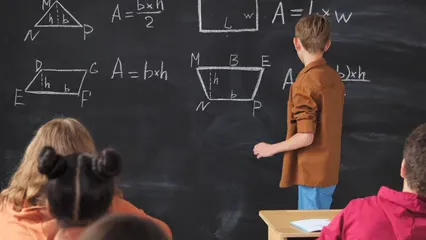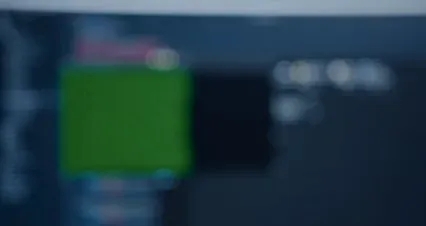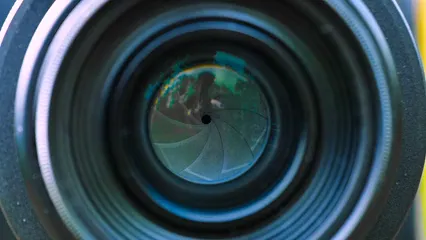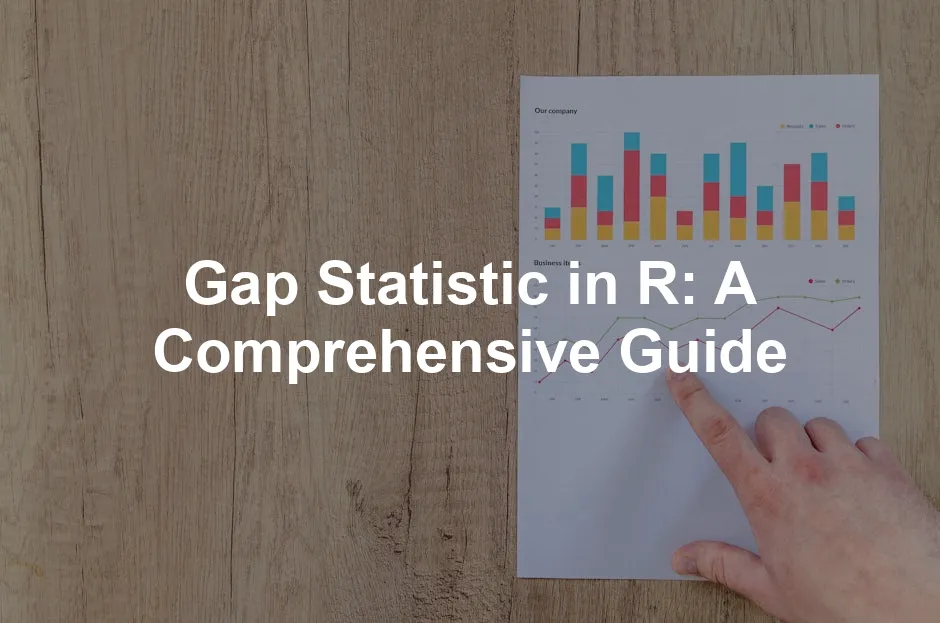Introduction
Clustering is a crucial technique in data analysis. It groups similar data points into clusters, revealing hidden patterns. But how do you decide the optimal number of clusters? If you choose too few, you risk losing valuable insights. Choose too many, and you might find noise instead of meaningful data.
Enter the Gap Statistic! This nifty tool helps you determine the ideal number of clusters. It does this by comparing the log of within-cluster dispersion for various cluster counts against a reference distribution. And the best part? You can easily implement it using R programming. If you’re looking to get started with R, consider picking up R Programming for Data Science by Roger D. Peng. It’s like having a personal guide through the wonderful world of R!
In this guide, we’ll navigate the ins and outs of the Gap Statistic. We’ll cover its principles, applications, and how to use it effectively in R. So, let’s dive into this exciting world of clustering!

Understanding Clustering
What is Clustering?
Clustering is an unsupervised learning technique. It categorizes data points into groups based on their similarities. Imagine you’re at a party, and you want to sort guests into groups: introverts, extroverts, and those who just want snacks. Clustering does the same with data!
There are several clustering methods, each with its flair. Some of the most widely used techniques include:
- Partitioning Methods: These divide data into distinct clusters. The K-means algorithm is the most popular example. It assigns data points to K clusters, aiming to minimize variance within each cluster.
- Hierarchical Clustering: This method builds a tree of clusters. It can be agglomerative (starting with individual points and merging them) or divisive (starting with one big cluster and splitting it).
- Density-based Methods: These identify clusters as areas of high density separated by areas of low density. DBSCAN is a well-known example of this approach.
Clustering is essential in numerous fields, including marketing, biology, and social sciences. It allows for customer segmentation, gene expression analysis, and even social network analysis. With clustering, you can uncover patterns that would otherwise remain hidden. For a deeper dive into data science techniques, check out The Art of Data Science by Roger D. Peng and Elizabeth Matteson. It’s a must-read!

The Need for Determining Optimal Clusters
Determining the optimal number of clusters is vital for effective data analysis. Why? Because the wrong number can lead to misleading conclusions. Too few clusters might oversimplify the data, while too many can introduce noise, making it hard to derive actionable insights.
Common challenges in clustering include overfitting and underfitting. Overfitting occurs when the model captures noise as if it were signal, leading to overly complex clusters. Conversely, underfitting happens when important patterns are ignored, resulting in overly simplistic clusters.
Selecting the right number of clusters helps avoid these pitfalls. It allows for a more accurate interpretation of the underlying data structure. By using methods like the Gap Statistic, you can objectively assess the best cluster count, ensuring your analysis remains robust and insightful. To further enhance your data analysis skills, consider grabbing Data Science from Scratch: First Principles with Python by Joel Grus.

The Gap Statistic
Introduction to the Gap Statistic
The Gap Statistic is a pivotal tool used for determining the optimal number of clusters in data analysis. Developed by Robert Tibshirani, Guenther Walther, and Trevor Hastie, this method helps to evaluate the clustering structure of a dataset, particularly when using methods like K-means.
Mathematically, the Gap Statistic compares the log of the within-cluster dispersion with expected values derived from a null hypothesis. The core idea is straightforward: you compute the within-cluster variations for different values of k (the number of clusters) and assess how these variations differ from what you would expect under a uniform distribution of points.
To be more precise, the Gap Statistic is defined as:
\[
\text{Gap}(k) = E^*[\log(W(k))] - \log(W(k))
\]
Where:
- W(k) is the total within-cluster variation for k clusters.
- E^*[\log(W(k))] is the expected value of the log of within-cluster dispersion under the null hypothesis, which is typically estimated through bootstrapping.
This means that the Gap Statistic gives you a measure of how much better your clustering solution is compared to a random clustering of the data. The larger the gap, the more evidence there is that your chosen number of clusters is appropriate. For those wanting to delve deeper into statistical methodologies, consider Practical Statistics for Data Scientists by Peter Bruce and Andrew Bruce.

The process involves simulating a reference distribution for the data, usually a uniform distribution in the feature space. You then perform clustering on this simulated data and calculate the expected log of the within-cluster dispersion. By comparing this with the actual log of the within-cluster dispersion from your original data, you can assess whether the clustering is meaningful.
This approach is particularly appealing because it provides a statistical basis for selecting the number of clusters, rather than relying solely on subjective methods like the elbow method, which can sometimes be ambiguous. Thus, the Gap Statistic serves as a robust solution in the quest for optimal clustering, offering clear insights into the data’s structure.

Advantages of the Gap Statistic
The Gap Statistic boasts several advantages that make it an appealing choice for determining the optimal number of clusters. One of its most significant benefits is its statistical foundation. Unlike intuitive methods, such as visual inspections or arbitrary cutoffs, the Gap Statistic relies on a rigorous mathematical framework. This robustness helps ensure that the selected number of clusters is not just a product of bias or guesswork.
Another advantage is that the Gap Statistic is adaptable to various clustering methods. Whether you’re using K-means, hierarchical clustering, or other techniques, this statistic can still provide valuable insights. This versatility allows data scientists to apply the Gap Statistic across a wide range of scenarios. If you’re interested in learning more about data mining techniques, check out Data Mining: Concepts and Techniques by Jiawei Han, Micheline Kamber, and Jian Pei.

Moreover, the Gap Statistic is particularly effective in handling datasets with varying densities and shapes. It does not assume spherical clusters, which is a limitation of some other methods. By relying on the log of the dispersion, it allows for more complex structures, ensuring that the chosen clusters reflect the true nature of the data.
Additionally, the Gap Statistic can help avoid common pitfalls like overfitting and underfitting. By providing a clear cutoff for the optimal number of clusters, it helps you resist the temptation to create too many clusters simply because they appear to fit the data better.
In summary, the Gap Statistic is a powerful, statistically sound method that offers flexibility and clarity. It enables data analysts to make informed decisions about the number of clusters to use, ultimately leading to more insightful analyses and better decision-making.

Using the clusGap() Function
The clusGap() function in R is a pivotal tool for calculating the Gap Statistic. This statistic helps determine the optimal number of clusters for your dataset by comparing the observed clustering results with expected values under a null reference distribution. Let’s break down the usage of this function, its parameters, and how to implement it with examples.
To use the clusGap() function, you need to have a numeric matrix or data frame containing your data. The function has several important parameters:
- x: This is the input data, which should be a numeric matrix or data frame.
- FUNcluster: Here, you specify the clustering function you wish to use (e.g., kmeans, pam).
- K.max: This parameter defines the maximum number of clusters to consider. It must be at least two, as clustering requires at least two groups.
- B: This is the number of bootstrap samples. The default is set to 100, but increasing this can lead to more accurate results.
- d.power: This is a positive integer specifying the power applied to the Euclidean distances before summing to give W(k). The default value is 1.
- spaceH0: This specifies the space of the null hypothesis distribution. Options include scaledPCA for PCA-rotated space or original.
- verbose: This logical parameter controls the output of progress messages during computation.
Here’s a code snippet demonstrating how to apply the clusGap() function using the popular K-means clustering method:
# Load necessary library
library(cluster)
# Generate some example data
set.seed(123)
data <- rbind(matrix(rnorm(150, mean = 0), ncol = 3),
matrix(rnorm(150, mean = 3), ncol = 3))
# Define the clustering function for K-means
kmeans_function <- function(x, k) {
kmeans(x, centers = k, nstart = 25)
}
# Apply the clusGap function
gap_stat <- clusGap(data, FUNcluster = kmeans_function, K.max = 10, B = 50)
# Print the gap statistic results
print(gap_stat)
In this example, we generate a simple dataset with two clusters and then compute the Gap Statistic using K-means. The clusGap() function compares the log of the within-cluster dispersion for varying numbers of clusters (up to K.max), allowing us to visualize how well our clustering performs compared to the expected random distribution.

The output of clusGap() is an object of class “clusGap”. This object contains a table with columns for the log of the within-cluster dispersion, the expected log dispersion, the Gap Statistic, and the standard error of the simulation. You can extract and interpret these values to determine the optimal number of clusters. If you’re looking for a comprehensive resource on data visualization techniques, consider Data Visualization: A Practical Introduction by Kieran Healy.
With the Gap Statistic in hand, the next step is visualizing these results to help make an informed decision on the number of clusters to use. For more effective analysis, consider these tips for effective data analysis in economics and statistics.

Visualizing Gap Statistic Results
Visualizing the results of the Gap Statistic is an essential step in interpreting the output effectively. The ggplot2 package in R makes it easy to create informative plots that can help you identify the optimal number of clusters.
To visualize the Gap Statistic results, you can utilize the built-in plotting capabilities of the clusGap object. However, for more customization and aesthetic control, ggplot2 is the way to go. Here’s how to do it:
# Load necessary libraries
library(ggplot2)
# Convert the gap statistic results to a data frame
gap_data <- as.data.frame(gap_stat$Tab)
# Create a plot of the Gap Statistic
ggplot(gap_data, aes(x = 1:nrow(gap_data), y = gap)) +
geom_line() +
geom_point(size = 3) +
geom_errorbar(aes(ymin = gap - SE.sim, ymax = gap + SE.sim), width = 0.2) +
labs(title = "Gap Statistic Results",
x = "Number of Clusters (K)",
y = "Gap Statistic") +
theme_minimal()
In this code, we take the Gap Statistic results and convert them into a data frame suitable for plotting. The ggplot() function creates a line plot where the x-axis represents the number of clusters, and the y-axis represents the Gap Statistic values. Points and error bars are added to illustrate the uncertainty associated with the Gap Statistic estimates.

As you examine the plot, look for the point where the Gap Statistic begins to level off or where the first significant drop occurs. This point typically indicates the optimal number of clusters.
By visualizing the results of the Gap Statistic, you can make more informed decisions about the number of clusters to use in your analysis, enhancing your clustering outcomes. If you want to explore machine learning concepts, consider Hands-On Machine Learning with Scikit-Learn, Keras, and TensorFlow by Aurélien Géron. It’s a fantastic resource!

Gap Statistic with Hierarchical Clustering
Applying the Gap Statistic in hierarchical clustering can be a bit more complex than with methods like K-means, but it’s entirely feasible. When using hierarchical clustering, the primary challenge is to ensure that you can effectively evaluate the clustering structure using the Gap Statistic.
To perform hierarchical clustering with the Gap Statistic, you typically need to define a custom clustering function. This function should return the clusters generated by the hierarchical method, which you can then pass to clusGap(). Here’s how you can do this:
# Load necessary libraries
library(cluster)
# Create a sample dataset
data <- rbind(matrix(rnorm(150, mean = 0), ncol = 3),
matrix(rnorm(150, mean = 5), ncol = 3))
# Define the hierarchical clustering function
hierarchical_clustering <- function(x, k) {
# Compute the distance matrix
dist_mat <- dist(x, method = "euclidean")
# Generate the hierarchical clustering model
hclust_model <- hclust(dist_mat, method = "average")
# Cut the tree to get k clusters
cutree(hclust_model, k = k)
}
# Apply the clusGap function for hierarchical clustering
gap_stat_hclust <- clusGap(data, FUNcluster = hierarchical_clustering, K.max = 10, B = 50)
# Print the results
print(gap_stat_hclust)
Here, we first create a sample dataset with two clusters. Next, we define a function for hierarchical clustering that calculates the distance matrix, performs hierarchical clustering, and cuts the tree to obtain the specified number of clusters.
Then, we apply clusGap() using this custom function to calculate the Gap Statistic. The results will help you decide the optimal number of clusters for hierarchical clustering. If you’re interested in understanding machine learning from scratch, grab a copy of Data Science for Beginners. It’s a great starting point!

When working with hierarchical clustering, one challenge is ensuring that the distance matrix and the clustering function are compatible. It’s essential to check that your distance metric aligns with the clustering method you choose.
In summary, the Gap Statistic is a versatile tool that can be effectively used with both K-means and hierarchical clustering methods. By following the outlined steps and utilizing the provided code snippets, you can confidently determine the optimal number of clusters for your dataset, leading to more meaningful analyses and insights.

Practical Example: Case Study
Let’s roll up our sleeves and get hands-on with the Gap Statistic using the classic Iris dataset! This dataset is like the friendly neighborhood of data science. It features 150 samples of iris flowers, with four features: sepal length, sepal width, petal length, and petal width. Our goal? To figure out the optimal number of clusters using the Gap Statistic in R.
First, make sure you have the necessary libraries installed. You’ll need cluster, ggplot2, and factoextra. Here’s how to kick things off:
# Install required packages if you haven't already
install.packages(c("cluster", "ggplot2", "factoextra"))
Now let’s load our libraries and the Iris dataset:
# Load necessary libraries
library(cluster)
library(ggplot2)
library(factoextra)
# Load the Iris dataset
data(iris)
Before we dive into clustering, we need to prepare our data. We’ll remove the species column, focusing solely on the numeric data. Then, standardize the features to ensure that no single feature dominates the clustering process.
# Prepare the data
iris_data <- iris[, -5] # Remove species column
scaled_iris <- scale(iris_data) # Scale the data
With our data prepped, we can now compute the Gap Statistic using the clusGap() function. This function will help us determine how well our clusters are formed compared to a random distribution.
# Define the clustering function
kmeans_function <- function(x, k) {
kmeans(x, centers = k, nstart = 25)
}
# Compute the Gap Statistic
set.seed(123) # For reproducibility
gap_stat <- clusGap(scaled_iris, FUNcluster = kmeans_function, K.max = 10, B = 50)
# Print the gap statistic results
print(gap_stat)
The K.max parameter specifies the maximum number of clusters to evaluate, while B indicates the number of bootstrap samples to use. The more bootstrap samples, the more reliable your results, but they also take longer to compute. If you’re looking for a comprehensive guide on statistical learning, consider An Introduction to Statistical Learning by Gareth James, Daniela Witten, Trevor Hastie, and Robert Tibshirani.

Next up, let’s visualize these results. A good plot will help us identify the optimal number of clusters visually. We can use the fviz_gap_stat() function from the factoextra package.
# Visualize the Gap Statistic results
fviz_gap_stat(gap_stat) +
labs(title = "Gap Statistic for Iris Dataset",
x = "Number of Clusters (K)",
y = "Gap Statistic") +
theme_minimal()
When looking at the plot, focus on the point where the Gap Statistic peaks. This peak indicates the optimal number of clusters. According to the results of our calculations, you might find that the optimal number of clusters suggests around three clusters, which aligns nicely with the three species of iris flowers present in the dataset.
Finally, let’s interpret these results. The Gap Statistic provides a statistical basis for selecting the number of clusters. The larger the gap, the better the clustering structure compared to a random clustering.
In this case, we can conclude that using three clusters is reasonable. That’s because the Iris dataset inherently contains three classes: Setosa, Versicolor, and Virginica. By applying the Gap Statistic, we’ve statistically confirmed our insights into the dataset’s structure, allowing us to confidently proceed with our clustering analysis. If you’re excited about continuing your journey in data science, don’t miss Data Science for Business by Foster Provost and Tom Fawcett. It covers essential concepts that will enhance your understanding of data science applications!
Now you have a solid example of how to implement the Gap Statistic in R, using the Iris dataset. This example highlights the process from data preparation, through computation, to visualization and interpretation. It’s a neat way to ensure your clustering work is on point, statistically speaking!

Conclusion
To wrap things up, we’ve explored the Gap Statistic as a method for determining the optimal number of clusters in data analysis, particularly in R. This approach offers a robust statistical foundation, allowing data scientists to make informed decisions rather than relying solely on intuition.
By comparing the log of within-cluster dispersion to expected values from a random distribution, the Gap Statistic provides clarity on how well clusters are formed. The process of calculating it using the clusGap() function in R is straightforward and effective.
In our hands-on example with the Iris dataset, we illustrated how to prepare data, compute the Gap Statistic, visualize results, and interpret findings. These steps not only enhance the reliability of clustering analyses but also ensure meaningful insights.
Ultimately, the Gap Statistic stands out as an essential tool in the clustering toolkit, helping to prevent overfitting and underfitting while ensuring the selected number of clusters is both effective and statistically sound. As you venture into your clustering projects, remember: the right tools, like the Gap Statistic, can lead to profound insights and better decision-making. For those who want to deepen their understanding of statistics, consider checking out The Elements of Statistical Learning by Trevor Hastie, Robert Tibshirani, and Jerome Friedman. It’s a fantastic resource for understanding advanced statistical methods!
FAQs
What is the optimal number of clusters?
The Gap Statistic is a powerful tool for determining the optimal number of clusters in your dataset. To interpret its results, focus on the values it generates for various cluster counts, denoted as k. When you compute the Gap Statistic, you obtain a comparison between the log of the within-cluster dispersion for your data and the expected dispersion under a null hypothesis of uniform distribution. Essentially, you’re looking for the largest gap between these two values. To find the optimal number of clusters, look for the point where the gap begins to flatten out or decrease. This is where adding more clusters yields diminishing returns. A common approach is to apply the ‘1-standard error’ rule. This suggests choosing the smallest k such that the Gap Statistic at k is greater than or equal to the Gap Statistic at k+1 minus the standard error associated with k+1. If you see that the Gap Statistic peaks at k=3 and starts to drop or level off, that’s your signal! It indicates that three clusters provide a meaningful clustering structure without overfitting.
How does Gap Statistic compare to other methods?
The Gap Statistic stands out amongst clustering methods like the Elbow Method and Silhouette Analysis. While all aim to determine the optimal number of clusters, they do so in different ways. The Elbow Method involves plotting the explained variance against the number of clusters. The ‘elbow’ point, where the rate of decrease sharply changes, suggests the ideal k. However, this method can be subjective, as it relies heavily on visual interpretation. On the other hand, Silhouette Analysis assesses how similar an object is to its own cluster compared to other clusters. The silhouette coefficient ranges from -1 to 1, where a value close to 1 indicates that the data point is well-clustered. Yet, this method doesn’t always provide clear-cut results for determining the number of clusters. In contrast, the Gap Statistic provides a statistical basis for cluster selection, comparing actual data against a random distribution. It offers a more objective method for identifying the optimal number of clusters, making it a preferred choice for many data analysts.
Can I use Gap Statistic for non-K-means clustering methods?
Absolutely! While the Gap Statistic is often associated with K-means clustering, it’s versatile enough to be applied to various clustering methods. You can use it with hierarchical clustering, partitioning around medoids (PAM), and others. To implement the Gap Statistic for non-K-means methods, simply define an appropriate clustering function that returns the clusters generated by your chosen method. For example, when using hierarchical clustering, you can create a function that performs clustering and then pass it to the clusGap() function. This flexibility allows you to assess the effectiveness of different clustering solutions beyond K-means, ensuring that you can find the optimal number of clusters, regardless of the method being employed.
What are some limitations of the Gap Statistic?
While the Gap Statistic is a robust tool, it does come with certain limitations. One significant drawback is its reliance on the choice of reference distribution. The standard approach often assumes a uniform distribution, which may not be suitable for all datasets. Additionally, the Gap Statistic can be sensitive to the number of bootstrap samples used in its calculation. If the number of bootstraps is too low, it may result in less reliable estimates of the expected within-cluster dispersion. Another consideration is computational overhead. Calculating the Gap Statistic can be time-consuming, especially with large datasets or when using complex clustering algorithms. This factor can pose challenges in real-time applications or when working with extensive data. Despite these limitations, the Gap Statistic remains a valuable method for determining optimal clusters, provided its results are interpreted in context and complemented with other clustering validation techniques.
How to handle large datasets?
Handling large datasets when computing the Gap Statistic can be challenging, but there are strategies to optimize efficiency. First, consider using a sampling approach. Instead of applying the Gap Statistic on the entire dataset, select a representative subset that maintains the overall distribution. This reduces computation time while still providing reliable insights. You can also utilize parallel processing capabilities in R. Functions like mclapply() from the parallel package allow you to distribute the computation workload across multiple CPU cores. This can significantly speed up the calculation of the Gap Statistic, especially when working with numerous bootstrap samples. Another tip is to limit the maximum number of clusters assessed (K.max). By focusing on a reasonable range of clusters, you can avoid unnecessary computations while still identifying the optimal number of clusters effectively. Lastly, ensure your data is preprocessed efficiently. Scaling and handling missing values upfront can streamline the clustering process and enhance the accuracy of your results. By adopting these strategies, you can compute the Gap Statistic efficiently, even on large datasets.
Please let us know what you think about our content by leaving a comment down below!
Thank you for reading till here 🙂
All images from Pexels




